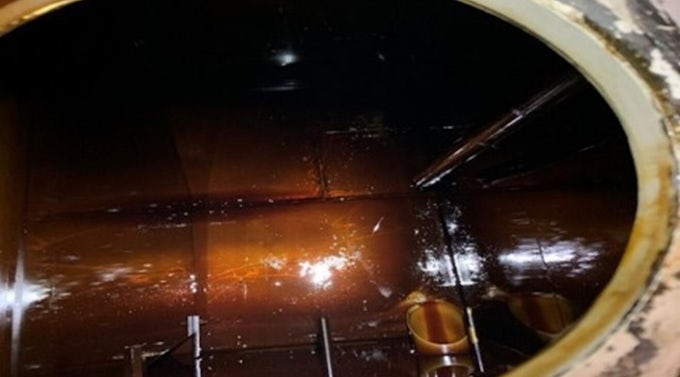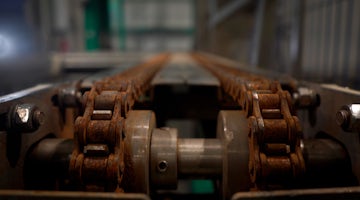Know the difference and protect your machines
Viscous or varnish?
Do you see thick, sticky grease or a hard, shiny deposit on your machines? At first glance they may look alike, but one is exactly what your equipment needs, and the other can cause serious problems. Here we explain the difference and how to keep your lubricants performing as they should.
What does viscous mean?
A viscous lubricant is thick, tacky and slow-flowing. This is not a fault but a desired property, chosen for heavy loads, low speeds or vertical surfaces. Viscous is designed to stay in place and form a strong lubricating film.
Examples:
– Thick grease in a heavily loaded bearing
– Sticky oil on the gears of an open drive
What is varnish?
Varnish is something else entirely: a hard, thin, shiny deposit that forms when lubricants degrade due to heat, oxidation or contamination.
It adheres to surfaces, impedes lubrication and can block or damage bearings, valves and gears.

Varnish in oil tank
Examples:
– Lacquer-like film on hydraulic valves
– Brittle, dark residue on bearing housings
How to tell the difference?
| Feature | Viscous lubricant | Varnish |
|---|---|---|
| Consistency | Tacky, smooth, spreadable | Hard, brittle or lacquer-like |
| Colour | Even, product-specific | Dark, patchy, uneven |
| Origin | Designed property | Breakdown from heat or dirt |
| Feel | Sticky and slow-flowing | Brittle or firmly stuck |
| Effect | Protects and lubricates | Obstructs movement, causes damage |
How to prevent varnish and preserve the right viscous properties
With a few simple measures you can make sure high-quality lubricants keep their intended properties:
- Choose a lubricant with the right viscosity and consistency for the application
- Store lubricants clean, dry and at stable temperature
- Use clean, dedicated tools for each product
- Check stocks regularly for expiry dates
- Avoid cross-contamination with clear labels and fixed procedures
The MicPol® technology in Interflon lubricants helps too: it creates a strong, durable lubricating film, reduces friction and heat, and helps limit varnish build-up.
In summary:
✔ Viscous = desired, for reliable lubrication
❌ Varnish = unwanted, a sign of degradation and risk of failure
With the right approach you make the most of your lubricants’ quality and extend the service life of your machines.
Want to know more?
Do you want to make sure your lubricants are still performing as they should? Our specialists are happy to help with advice. Contact us for advice, no obligations!
Author: Janneke van der Pol, MLT1
Frequently Asked Questions
A viscous lubricant is thick by design and maintains a protective film. Varnish is an unwanted by-product of oil degradation, a sticky, hard, or resinous deposit that impairs lubrication.
Varnish forms when oil oxidises or thermally degrades, creating insoluble by-products that settle on metal surfaces, especially in hot, low-flow areas.
Select lubricants with high oxidation resistance, maintain clean and dry conditions, avoid over-application, and consider advanced technologies like MicPol® that reduce heat and wear while maintaining a stable film.


